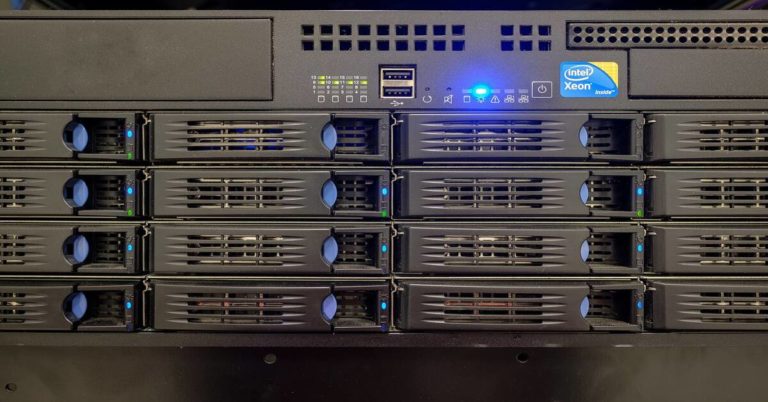11 Key Lessons for Starting New Business That Sells Without You
Whether you’re a freelancer that is starting new business or a business owner looking to build something you can sell, your goal is the same: you want a business that runs smoothly without you. When your business runs on its own, it becomes a valuable asset. You’ll have choices – you can take vacations, explore new hobbies, or just relax. Freedom is something that every small business owner dreams of, including myself.
While looking for ways to achieve that kind of freedom in my business, I discovered a book about creating a business that can thrive without its owner. In this blog post, I’ll share 11 key lessons from the book that really stood out to me. These lessons are presented through the story of a small business owner and offer invaluable insights for any entrepreneur looking to build a sellable business.
Table of Contents
- The Overwhelmed Business Owner
- Lesson 1: Isolate the Scalable Product
- Lesson 2: Don’t Generalize, Specialize
- Lesson 3: Diversify Your Client Base
- Lesson 4: Own a Process, Become a Product Company
- Lesson 5: Make the Business Independent of You
- Lesson 6: Charge Upfront
- Lesson 7: Don’t Be Afraid to Say No to Other Projects
- Lesson 8: Two Sales Reps Are Better Than One
- Lesson 9: Hire People Who Are Good at Selling Products, Not Services
- Lesson 10: Estimate Your Market Potential
- Lesson 11: Use Product-Oriented Language
- Conclusion
The Overwhelmed Business Owner
Our story centers on an advertising agency owner who faces several significant challenges:
- He’s doing almost all the work himself because clients only want to deal with him.
- He’s always running from one problem to the next, feeling constantly overwhelmed.
- His employees are below average and not particularly skilled at their jobs.
- His income is inconsistent, fluctuating dramatically from month to month.
Despite starting his agency with dreams of hiring the best people, paying them well, getting big-name clients, and eventually selling the business for a substantial profit, he finds himself dealing with average employees, demanding clients, and never-ending stress.
Frustrated and tired, the owner decides to sell his company and seeks advice from a successful serial entrepreneur. To his shock, he’s informed that his business is essentially worthless and unsellable in its current state.
Lesson 1: Isolate the Scalable Product
The first piece of advice is to identify the product or service that has the potential to scale. A scalable product meets three key criteria:
- Teachable: You can train others to build and sell it.
- Valuable: Customers will pay for it because it solves an important problem for them.
- Repeatable: Customers come back for it again and again.
After careful consideration, the owner realizes that logo design is their best work. They have a system they follow, clients like their work, and they can charge good money for it. Logo design also tends to lead to repeat business as clients launch new products.
Together with his mentor, the owner develops a five-step logo design process:
- Visioning
- Personification
- Sketch Concepts
- Black and White Proofs
- Final Design
This structured approach forms the foundation for transforming the agency into a scalable business.
Lesson 2: Don’t Generalize, Specialize
Once you’ve identified your scalable product, it’s crucial to focus solely on that offering. The mentor advises the owner to concentrate exclusively on logo design, despite his initial reluctance.
The problem with trying to do too many different things is that it requires specialists in various areas, which can be costly. Without the resources to hire top talent in multiple disciplines, businesses often end up with a team that’s average at many things but not great at anything.
By focusing on one area of expertise, you can:
- Improve the quality of your work
- Stand out among competitors
- Become more efficient in delivering your product
This specialization allows for continuous improvement and efficiency gains, much like how some airlines use only one type of aircraft to streamline their operations and maintenance.
Lesson 3: Diversify Your Client Base
While specializing in one product or service is crucial, it’s equally important to diversify your client base. The mentor warns about the dangers of relying too heavily on a single client, explaining that it makes the business risky and less attractive to potential buyers.
The goal is to have a diverse group of clients where no single company accounts for more than 10-15% of the revenue. This diversification not only reduces risk but also makes the business more appealing to potential buyers.
To implement this strategy, the mentor suggests:
- Position the agency as the world’s best logo design shop
- Create a one-page description of the five-step logo design process
- Pitch this new offering to at least 10 prospects
By following this advice, the owner manages to secure several meetings and even make a sale, boosting his confidence in the new approach.
Lesson 4: Own a Process, Become a Product Company
The mentor emphasizes the importance of owning a process and transitioning from a service company to a product company. When you own a process, you’re in control, and your unique method becomes your product.
The key difference between a service company and a product company is standardization:
- A service company customizes its approach for each client, relying heavily on individual expertise.
- A product company offers a unique and consistent method that can be scaled and is less dependent on specific individuals.
By shifting from customizing solutions for every client to offering a standardized process, the owner can move his agency from being a service company to a more valuable and scalable product company.
Lesson 5: Make the Business Independent of You
One of the most critical steps in creating a sellable business is making it independent of the owner. The mentor explains that when people are the main assets of a business, it becomes dependent on them and therefore less valuable, as these individuals can leave at any time.
To make the business independent, the owner needs to:
- Train people to handle each of the five steps in the logo design process
- Ensure that he’s not the only one piecing projects together
The goal is to build the agency to a point where it can run smoothly without the owner’s constant involvement. This independence is crucial for attracting potential buyers, as they want to be confident that the business can thrive under new ownership.
Lesson 6: Charge Upfront
A key distinction between product businesses and service businesses is the timing of payment. The mentor advises the owner to start charging upfront for his logo design process, treating it as a product rather than a service.
Benefits of charging upfront include:
- Improved cash flow
- Reduced financial risk
- Increased business value to potential buyers
By implementing this change, the owner can use client money to finance his business operations, creating a positive cash flow cycle. This approach makes the agency more attractive to potential buyers, as it requires less working capital to operate.
Lesson 7: Don’t Be Afraid to Say No to Other Projects
To establish the agency as a specialized logo design company, the owner must learn to turn down projects that fall outside this focus area. The mentor emphasizes the importance of saying no to other work, even if it seems profitable in the short term.
Benefits of turning down non-core projects:
- Reinforces your specialization
- Makes your business more memorable and referable
- Attracts clients who truly need your specific product or service
By consistently promoting the five-step logo design process and turning down other types of work, the owner can position his company as the go-to expert in logo creation.
Lesson 8: Two Sales Reps Are Better Than One
To demonstrate that the agency has built a valuable, scalable business model, the mentor advises hiring two sales representatives. This approach offers several advantages:
- Creates healthy competition between sales reps
- Increases overall sales performance
- Proves that the business isn’t dependent on a single salesperson
Having multiple salespeople selling the logo design process shows potential buyers that the company has a replicable sales model, increasing its value and sellability.
Lesson 9: Hire People Who Are Good at Selling Products, Not Services
When it comes to hiring salespeople, the mentor recommends looking for individuals with experience selling products rather than services. This distinction is crucial because:
- Product salespeople are used to working with standardized offerings
- They focus on making the product fit the client’s needs rather than customizing solutions
- They’re better equipped to sell a process-driven service like the five-step logo design
The owner follows this advice by hiring a top salesperson from the mobile phone industry, rather than someone with experience in traditional advertising agencies. This decision proves successful as the new hire quickly adapts to selling the logo design process and brings in their first sale.
Lesson 10: Estimate Your Market Potential
To attract potential buyers, it’s essential to demonstrate that your business has a significant market opportunity. The mentor helps the owner estimate the market potential for their logo design service by:
- Researching the number of businesses within a 100-mile radius
- Estimating how many of these businesses could afford their $10,000 logos
- Calculating the potential revenue based on their current closing rate
This analysis reveals a substantial market potential of $14.5 million in their local area alone, not counting potential expansion to other cities. Such data is crucial for showing potential buyers the growth opportunities available to the business.
Lesson 11: Use Product-Oriented Language
The final lesson focuses on the importance of language in positioning your business. The mentor advises the owner to make subtle but significant changes in how he refers to his business and customers:
- Replace “client” with “customer”
- Stop calling the agency a “firm” and start referring to it as a “business”
These linguistic shifts signal to potential buyers that the agency is a product business with standard, repeatable processes rather than a service-oriented firm. This perception can significantly increase the company’s value when it comes time to sell.
Conclusion
Building a business that can thrive without you is a challenging but rewarding process. By implementing these 11 lessons, entrepreneurs can transform their businesses from owner-dependent entities into valuable, sellable assets.
Of all the tips discussed, the most crucial and challenging to implement is Lesson 5: Make the business run independently of you. Until you achieve this, you don’t have a business; you just have a job – and it’s the worst kind of job.
By focusing on creating scalable products, specializing your offerings, diversifying your customer base, and implementing systems that allow the business to run smoothly without your constant involvement, you can create a truly valuable and sellable business. This not only increases your company’s worth but also gives you the freedom and flexibility that many entrepreneurs dream of when starting their journey.
Remember, building a sellable business is a process that requires dedication, strategic thinking, and a willingness to change. But with persistence and the right approach, you can create a business that not only thrives in your presence but continues to flourish even when you’re not there.






